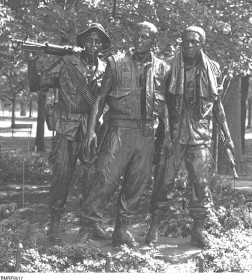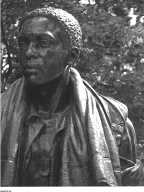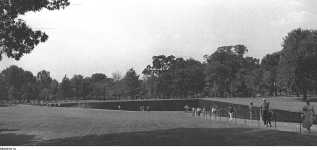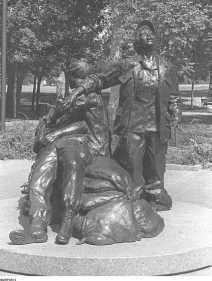Americans were introduced to Vietnam in 1965. In
that year, the United States entered the Vietnam Police
Action. This police action, which caused conflict at
home as well as on the battlefield, lasted until
January1973. Figures 5-16
through 5-19
commemorate American actions in Vietnam.
The Navy’s operations in support of South Vietnam’s
struggle against communist military aggression
consisted mainly of gunfire support and carrier aircraft
operations. These operations included coastal
interdiction patrols against North Vietnamese ships
moving troops and supplies to the south. They also
included riverine operations by a swarm of various types
of patrol craft in the maze of waterways in South
Vietnam’s delta area. (By early 1972 all boats and the
responsibility for delta operations had been turned over
to the South Vietnamese Navy.) Naval construction
battalions (Seabees) built several military bases and
constructed water and sanitary facilities for local
communities. Often, as in World War II, they engaged in
fighting as they worked. Navy medical personnel served
in the field with Marine Corps and Seabee units, as they
did in World War II and in the Korean Conflict. They
often performed their duties under fire and often
sacrificed themselves to protect their charges from
further harm. As in previous wars, U.S. Navy service and
amphibious forces transported over 90 percent of the
personnel and supplies used in support of that conflict.
5-23
Student Notes:
Photograph courtesy of Mr. Francis Jeffery.
Figure 5-17.—Vietman memorial.
Photgraph courtesy of Mr. Francis Jeffery.
Figure 5-18.—Vietnam memorial—soldier.
Photograph courtesy of Mr. F4rancis Jeffery.
Figure 5-16.—The Wall .
Photograph courtesy of Mr. Francis Jeffery.
Figure 5-19.—Women in war—memorial.







